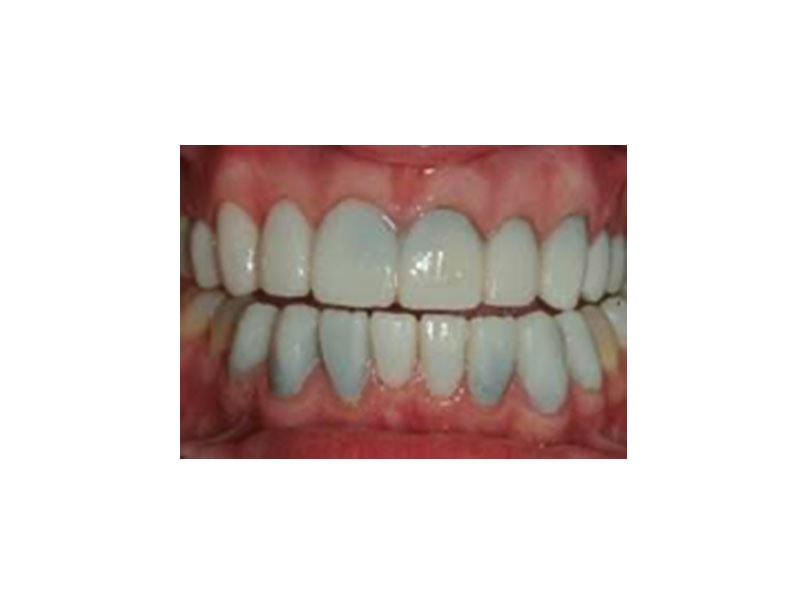Mistake #2 Discolouration Caused by Leaky Veneers
Microleakage or the black stain that can be seen around the gumline and under the porcelain layer after cementation of veneers occurs more often than people realize. There are a few factors that can cause microleakage or leaky veneers and you likely won’t know which one was the culprit until long after the veneers have been bonded in. One of the most common causes of leaky veneers is the bleeding of gum tissue when bonding new veneers. If there is any bleeding present at the margins when veneers are bonded in, microleakage can occur. Sometimes, this is very difficult to avoid, especially if the patient’s gums are not 100 percent healthy.
Healthy Gums Help Prevent Leaky Veneers
When a patient in our office requests porcelain veneers, but their gum tissues are inflamed, we will ensure that the gums are healthy before we bond the veneers permanently. There are many ways to improve the health of your gums, and a good cosmetic dentist will recommend that your inflamed gums are addressed before proceeding with cosmetic treatments to prevent the possibility of microleakage that cause you to be unhappy with the end result. Even if you are not considering cosmetic dentistry but are experiencing swollen gums, red or inflamed gums so that we can help you get your gums in back into top shape.
Moisture – Another Cause of Stained Dental Veneers
The second most common reason for leaky or stained dental veneers is the presence of saliva or moisture when veneers are bonded in. Saliva and moisture from your mouth breaks the bond between the adhesive and the veneer and tooth, resulting in micro-channels that allow bacteria, and stains, to penetrate. The best way to avoid the problem of microleakage is proper and pristine isolation techniques to prevent saliva from entering the bonding area. The most common way to prevent moisture from entering the treatment area is a properly placed rubber dam, which is an isolation technique that should be used in ALL bonding techniques, including fillings. Rubber dams prevent moisture from entering the affected area and helps to keep the area sterile, which is especially important in all treatments involving bonding.
This post is the second in our six-part series about common cosmetic dentistry mistakes which can include microleakage causing discolouration of veneers, and an unnatural look due to improper smile design. Watch for more blogs in this series and if you are considering a smile makeover or cosmetic dentistry in Oakville contact Oakville Dentist, Dr. Agatha Bis and her team by calling 905.338.6684 or by completing the form below. We are here to answer your questions about cosmetic dentistry treatments and improving your smile.

